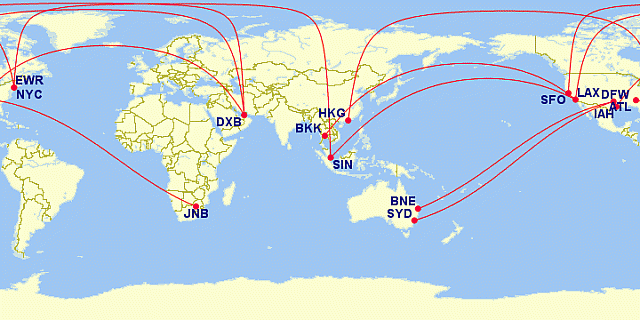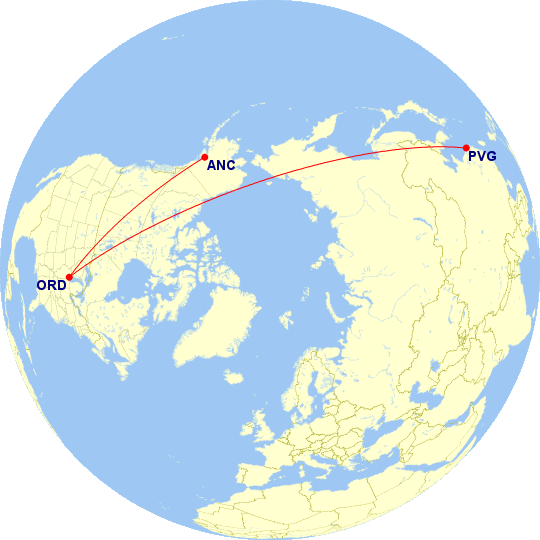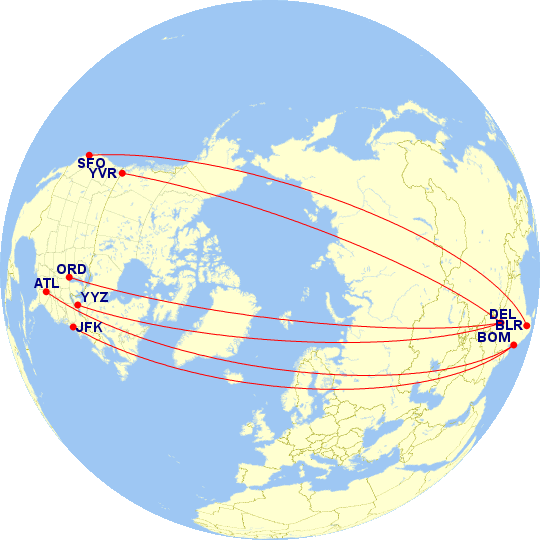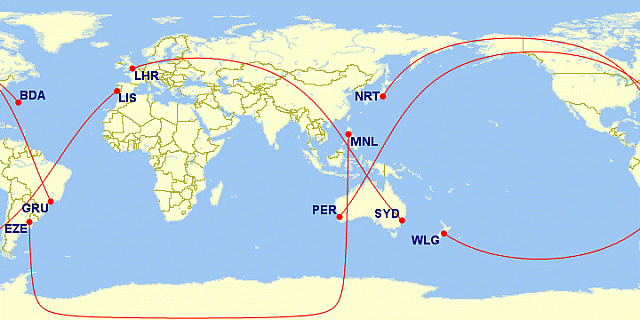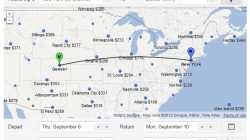Editors note: this is the first of two installments covering the dynamics of ultra-long haul flights that have become more and more commonplace in the global aviation world.
Ultra-long haul flights: they may sound brutal in practice, but it’s a pretty cool concept in theory.
Although the figure tends to change frequently, given the current high-risk environment with escalating oil prices, there are roughly 250 flights worldwide that currently exceed 4,999 nautical miles in distance. Approximately 30 of those qualify as ultra-long haul flights, measuring at over 6,500 nautical miles in distance.
Yet, that’s just a mere number. Distance generally is only one part of the equation, because duration is what people use as the most qualitative metric of an ultra-long haul flight. In addition to cruising airspeed, the blocked time of a nonstop flight depends on jet stream, tail wind, head wind, cross-wind, and Air Traffic Control routing.
The first ultra long-haul flight took off in May 1988 and flew nonstop from Los Angeles to Tel Aviv, traveling 6,581 nm and completing the journey in approximately 13 hours and 41 minutes.
Now, that route is a regularly scheduled flight operated by El Al Israel Airlines, but they waited 20 more years before officially launching the thrice weekly LAX-TLV flight in 2008.
The world’s top 10 longest flights:
1. Newark to Singapore
2. Los Angeles to Singapore
3. Sydney to Dallas/Ft. Worth
4. Atlanta to Johannesburg
5. Los Angeles to Dubai
6. Dallas/Ft. Worth to Brisbane
7. Los Angeles to Bangkok (to be discontinued 5/1)
8. Houston to Dubai
9. San Francisco to Dubai
10. New York JFK to Hong Kong
Now for some fascinating facts:
- Singapore Airlines launched the first and oldest regularly scheduled ultra-long haul flights that are still in existence today, in February 2004, connecting Newark and Los Angeles with Singapore. Both of those flights represent the #1 and #2 longest flights in the world, respectively.
- Delta is the only U.S. carrier which operates one of the top 5 longest flights, from Atlanta to Johannesburg, South Africa, at 7,334 nm
- By comparison, Southwest‘s longest flight is less than 2,500 miles, from Providence, R.I. to Las Vegas.
- JetBlue‘s is not much further, from Boston to San Francisco, at 2,704 miles
- Alaska‘s is from Chicago to Anchorage at 2,846 miles, but American‘s is between Chicago and Shanghai, People’s Republic of China, at 7,057 miles.
- Garuda Indonesia‘s is from Jakarta, Indonesia to Jeddah, Saudi Arabia at 4,955 miles
Chicago to Anchorage and Chicago to Shanghai routings. One is double the other, even though one is domestic and the other is intercontinental.
Ebb and flow
Many ultra-long haul flights have been tried and discontinued over the years. Believe it or not, one of the earliest was a Northwest Airlines Boeing 747-400 service from Minneapolis, MN to Hong Kong, which briefly operated in 1998. It failed largely due to the Asian currency crisis, and was a weak financial performer.
United also once flew from New York to Hong Kong, nonstop, but was halted shortly before 9/11 on August, 30, 2001, and for its 7 month shelf life, it was the longest nonstop commercial flight at 7,014 nm.
Thai Airways has pretty much gone 0 for 2 on its ultra-long haul flights to the United States. Thai canned its nonstop New York JFK-Bangkok flights in 2008 after 3 years of trying, and will be re-routing its nonstop Los Angeles-Bangkok flights with a 1-stop via Seoul beginning next month.
India has also been an interesting case study as a large hit-or-miss region of opportunity for the ULH flights. A large portion of the North America to India flights, from various points within the U.S. and Canada, have either been tried, tweaked, failed or never initiated due to the high-risk nature of such flights.
Several nonstop flights between North America and points within India have either been tried and failed, or never materialized, including:
1. Air Canada from Toronto to New Delhi: commenced in 2003, halted in 2005 using a stopover in Zurich, eliminated altogether in 2007 (unprofitable)
2. American from Chicago to New Delhi: commenced in 2005, discontinued in 2012 due to AMR’s restructuring and lack of profitability
3. Delta from New York JFK to Mumbai: commenced in 2006, moved from NY to Atlanta in 2008
4. Delta from Atlanta to Mumbai: moved from NY to Atlanta in Oct 2008, planned to moved back to JFK in Oct 2009, but both were cancelled altogether.
5. Air India from New York JFK to Mumbai: commenced in 2008, re-routed 1-stop via Delhi in October 2010
6. United from Chicago to Delhi (announced in 2001, axed before commencing due to 9/11)
7. Air Canada from Vancouver to Delhi (announced in 2001, axed before commencing due to 9/11)
8. Kingfisher from San Francisco to Bangalore: announced in 2007, plans halted in 2008 following global economic crisis
Untapped potential
Just for fun, imagine being able to fly nonstop between the following markets:
- From London, United Kingdom to Sydney, Australia (10,573 mi)
- From Manila, Philippines to Buenos Aires, Argentina (11,031 mi)
- From Sao Paulo, Brazil to Tokyo, Japan (11,489 mi)
- From Lisbon, Portugal to Wellington, New Zealand (12,164 miles)
- From Hamilton, Bermuda to Perth, Australia (12,389 miles)
If you were to travel all of these routes, you would fly 57646 mi!
And, believe it or not, Sao Paulo and Tokyo, as well as London and Sydney, are two markets HIGHLY in demand of a nonstop flight due to population diaspora, ethnic, business and commercial ties!
Imagine flying on any of these routing pairs between certain cities, on a nonstop flight!!!
San Francisco to Paris in just under two minutes
Although not a long-haul flight, the following YouTube clip depicts images taken roughly every two miles on an 11-hour Air France flight between San Francisco and Paris, from takeoff at SFO to parking at the gate at Charles de Gaulle. Shot with a 5d2, a time-lapse controller, and a 16mm – 35mm, mixed with some iPhone shots, the flight path from SF to Paris goes well over Greenland and the arctic circle, where you can see “northern” lights from all sides of the plane.
The photographer used an entire row for himself to set up the tripod and gear, and the photos compiled during takeoff and landing were all rendered by computer models (due to FAA prohibitions against use of electronic devises during these time periods).
Enjoy!

